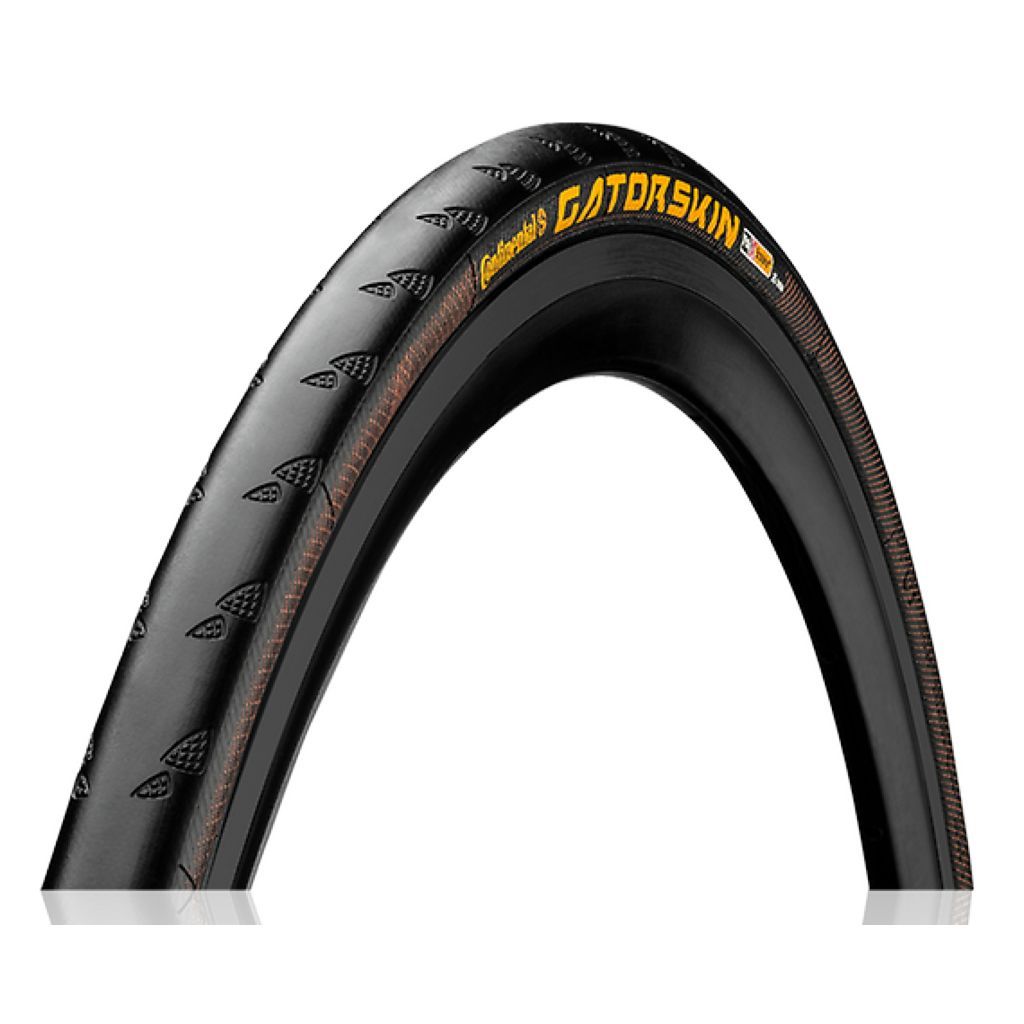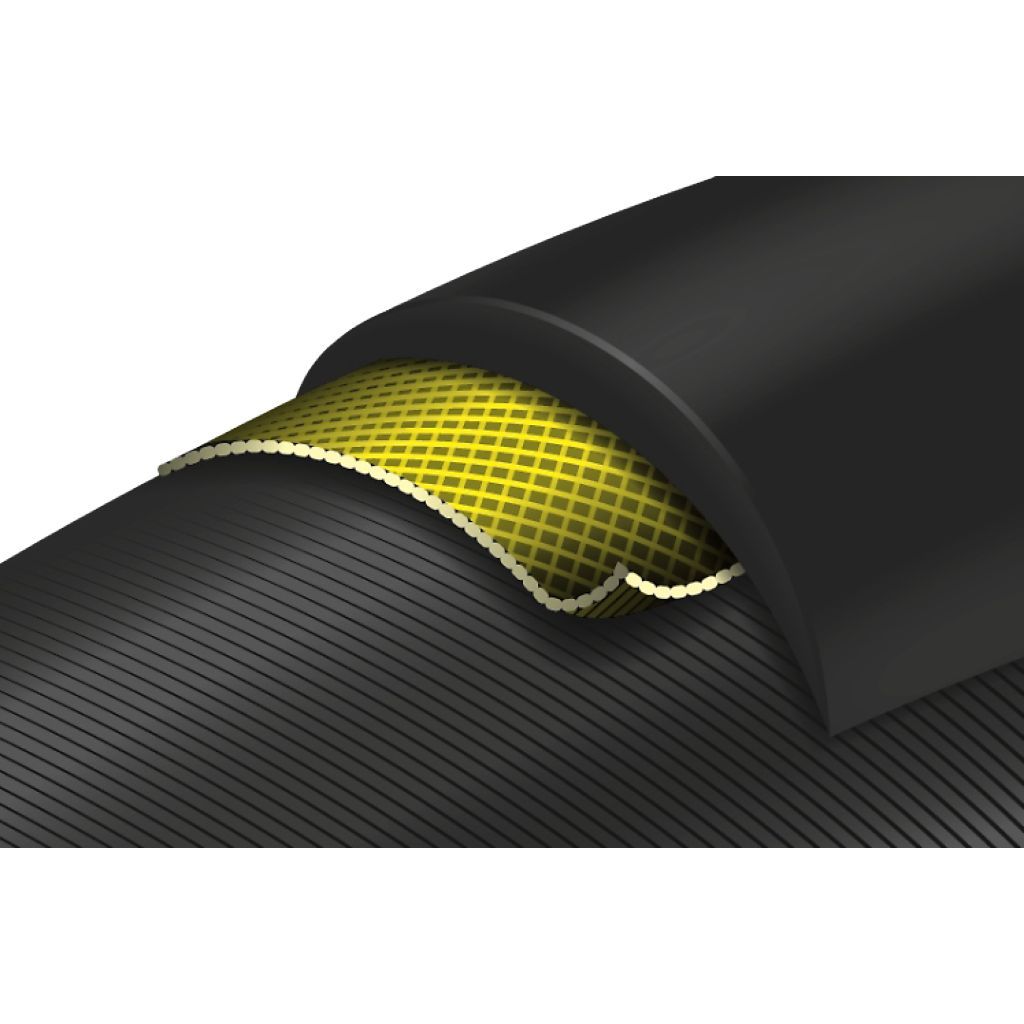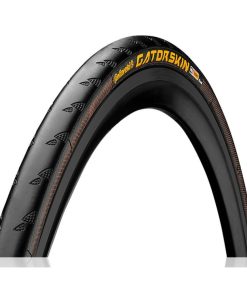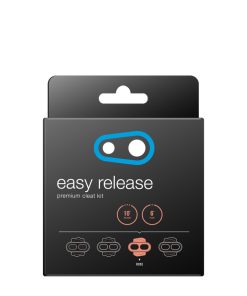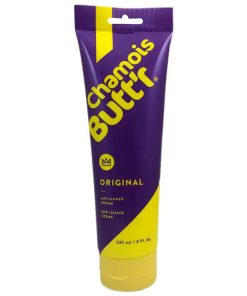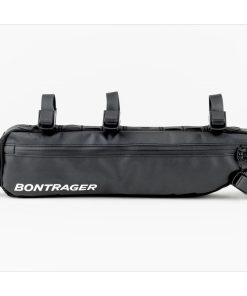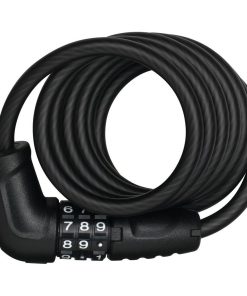Continental Gatorskin Folding Continental
$ 53,95 $ 26,98
The right tire when it comes to tough conditions.
The right choice for a strong performance in the urban field and on tour.
With their PolyX Breaker®, Continental brings their car expertise to the bicycle tire segment: Polyester has been used successfully for years in car tires and been tried and tested many times. The extremely resistant polyester fibre is woven tightly crosswise. In this way, a very high fabric density is reached which not only makes the Breaker more resistant to foreign objects but is also especially resistant to punctures. The rolling resistance is also not negatively affected by the PolyX Breaker®.
Tires with DuraSkin® sidewall protection have to be able to roll with the punches. They are used under the harshest conditions. On messenger bikes, the tires skid along curbs; on touring bikes, they cross continents without wearing out. In racing cycling, they have to endure tough tests such as the Paris-Roubaix. The high-quality polyamide fabric protects the tire casing against the worst conditions. These tires stand out thanks to their brown sidewalls.
FEATURES
- Intended Use: Road
- Technology:
- PolyX Breaker – With Continental’s PolyX Breaker, a resistant polyester woven fiber, you can be assured more resistance to possible punctures than a standard nylon casing.
- DuraSkin – DuraSkin sidewall protection equipped tires can take some serious abuse. They are used under the harshest conditions such as messenger bikes, the tires skid along curbs; on touring bikes, they cross continents without wearing out; in racing, they endure tough tests such as the Paris-Roubaix. The sidewall is protected with a high-quality polyamide fabric.
- Tire Type: Clincher
- Bead Type: Foldable
- Wheel Diameter: 700C
SPECS
| Dimension | ETRTO | TPI | Weight | PSI |
|---|---|---|---|---|
| 700 x 25C | 25 – 622 | 3/180 | 240g | 95-120 |
| 700 x 28C | 28 – 622 | 3/180 | 280g | 95-116 |
Continental has added wear indicators to all Continental Gatorskin tires. These small divots in the tread surface are intentional and are not a sign of a factory defect. Once the rubber wears to the point where the divots are no longer discernible, you’ll know it’s time to replace.
| Size | 700×23, 700×25, 700×28, 700×32 |
|---|
Prompt Delivery and Professional Packaging
Due to our long-term partnership with UPS, FedEx, DHL and many other leading global carriers, we can provide an array of shipping options. Our warehouse staff are highly trained and will package your items in accordance with our exact and precise specifications. Your products will be subjected to an extensive inspection and be properly packaged prior to being delivered. We ship to hundreds of thousands of customers each day across different countries. This shows how we're dedicated to being the largest online retailer in the world. The warehouses are located in Europe as much as they are in the USA.
Orders that contain more than 1 item are assigned processing times in accordance with the item.
Prior to shipment the items, our staff will carry out a thorough inspection on the products you have ordered. The majority of orders will be shipped within 48 hours. The estimated delivery time is between 3 and 7 days.
Returns
Due to the multiple parties involved such as the factory and the warehouse, we're unable to effectively manage inventory. Therefore, the actual inventory could fluctuate at any moment. It is possible that the stocks could be depleted after your order has been processed.
Our policy lasts for thirty days. We cannot replace or refund your purchase if it has been 30 days since you purchased it.
In order to be eligible for a refund, your item must be in good condition and in the same condition as you received it. It must also be returned in the original packaging.
Related products
Grips / Bar Tape
Bicycle Lock
Pedal - Cleat
Inflation
Hand Pump
Bike Accessory
Bag - Frame
Pedal - MTB
Pedal - MTB
Bicycle Lock
Inflation
Bicycle Lock
Bicycle Lock
